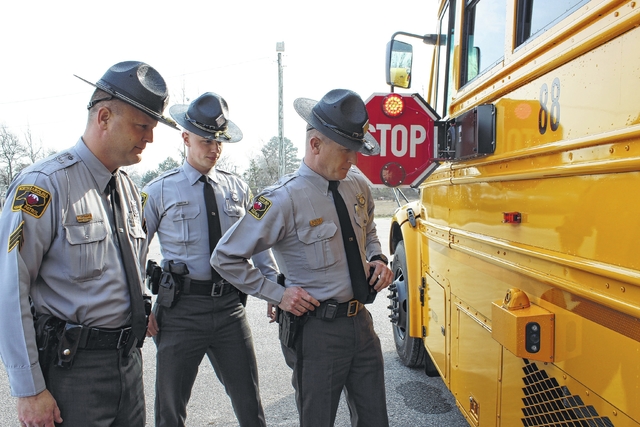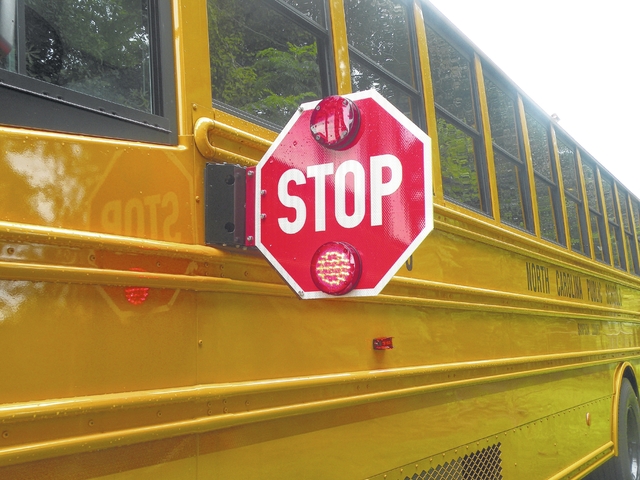On the first school day of 2016, school bus drivers were required to use hand signals for students crossing roads — a procedure set up by the North Carolina State Board of Education.
But the mandate is nothing new for drivers transporting Clinton and Sampson County students. Herb Sanderson, director of transportation for Sampson County Schools, said it was another adjustment for the drivers with no complaints so far.
“I know before the time change, some drivers were concerned when it was still dark on their morning routes, therefore the students couldn’t see the driver’s signal,” Sanderson said in regards to making adjustments.
Using national procedures and bus safety standards, the revised policy requires bus drivers to use a standard hand signal to let students know when it’s safe. The hand signal has three steps. First, the driver holds up a palm facing the student until it’s safe to cross. Next, the driver then gives a “thumbs up” to the students. The final step includes a driver pointing an index finger in the direction in which the child should proceed.
State officials believe the signal empowers the driver and compel students to consciously assess the road by looking at their bus driver before stepping on a busy road. The revised policy requires districts to document training and educate all students, not just those who need bus transportation. Although it became effective Jan. 1, some districts, such as Sampson County, already implemented the procedure.
“This is just another effort to take a proactive approach concerning passenger safety,” Sanderson said. “Federal, state and local agencies continue to make every effort to curb the driving errors of other motorist.”
According to the North Carolina Department of Public Instruction (NCDPI) five students were injured by motorists passing stopped school buses during the 2014-2015 school year. Thirteen students have been killed while boarding or exiting a school bus since 1999.
North Carolina law requires motorists to stop and remain stopped while the stop sign and flashing lights are operated. But according to research conducted by NCDPI Transportation staff, most injuries and fatalities come from drivers who ignored the signs.
“We have over 15 years of data to show that more than 3,000 cars per day are not going to stop,” said Derek Graham, NCDPI Transportation Services Section Chief, in a news release. “The revised policy represents a more proactive approach to what bus drivers and students can do to safe even when motorists don’t obey the law.”
Passing a stopped school bus is a Class 1 misdemeanor. If convicted, a person will receive driving points on their driver’s license and is subject to a fine. Passing a stopped school bus is a Class I Felony if the driver strikes an individual and carries a fine as well. Should the violation result in a death, the violation would be a Class H Felony along with a fine.
Additional information regarding school bus safety and illegal passing is available on the Department of Public Instruction’s school bus safety website at http://www.ncbussafety.org.


